The Museum's laboratory
The objects found during underwater archaeological expeditions and handed over to the Museum are cleaned up and treated for conservation in the Museum's laboratory. They include mainly items recovered from local wrecks and those discovered in the wrecks of the two vessels of the La Pérouse expedition (Vanikoro Island, Solomon Islands).
The Museum has over 8000 objects or fragments, many of which have lain on the seabed for a century or two. Made of wood, leather, textiles, bone, ivory, glass, metal or ceramics, they are extremely fragile and require careful professional handling. Their preservation relies on sophisticated modern techniques.
Slow degradation of materials in seawater

Feet of the ship’s wheel before and after treatment,
Seine Collection
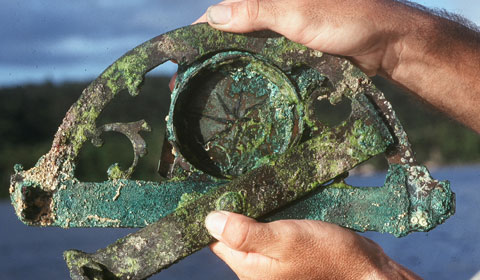
Graphometer before treatment, La Pérouse Collection
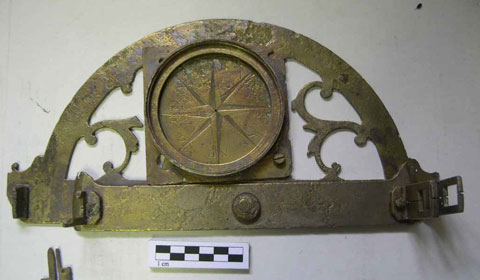
Graphometer after treatment, La Pérouse Collection
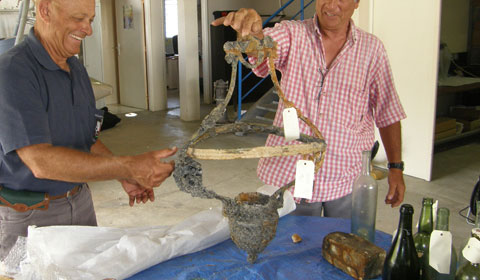
Chandelier before treatment,
Ville de St Nazaire collection
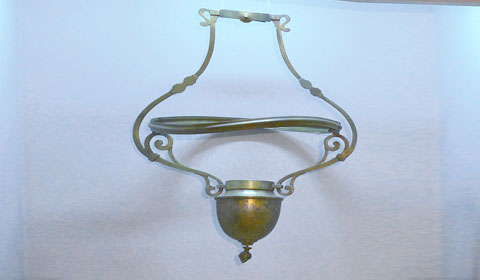
Chandelier after treatment,
Ville de St Nazaire collection
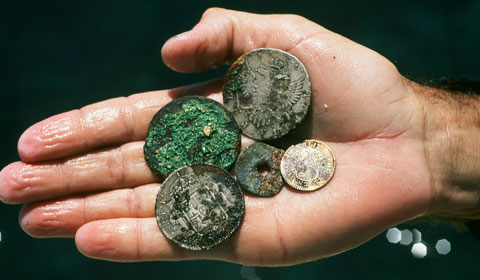
Coins before treatment, La Pérouse Collection
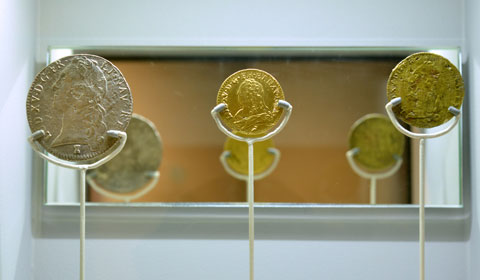
Coins after treatment, La Pérouse Collection
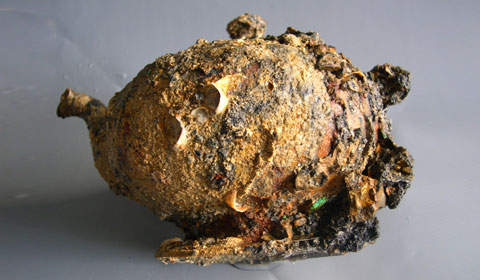
Teapot before treatment,
Ville de St Nazaire collection
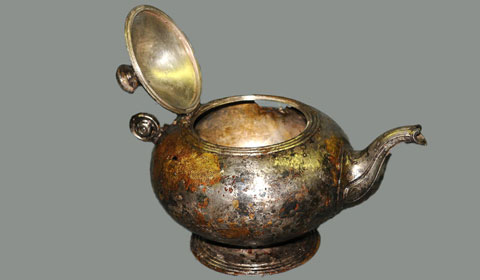
Teapot after treatment,
Ville de St Nazaire collection
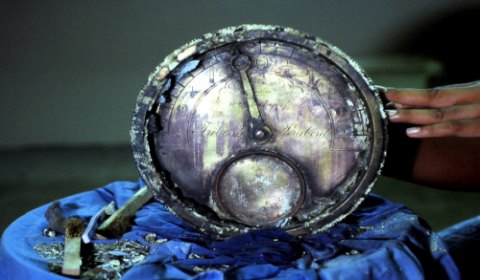
Rudder angle indicator before treatment,
Seine collection
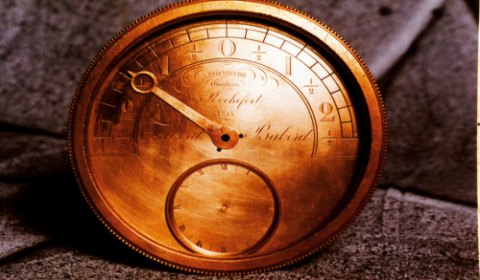
Rudder angle indicator after treatment,
Seine Collection
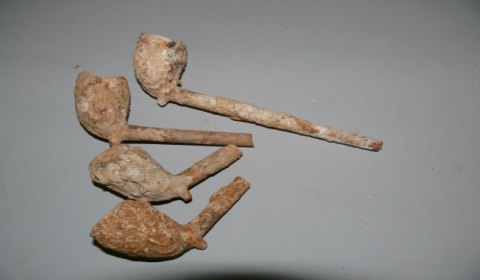
Pipes coated by a gangue of sediments,
Ambroua collection
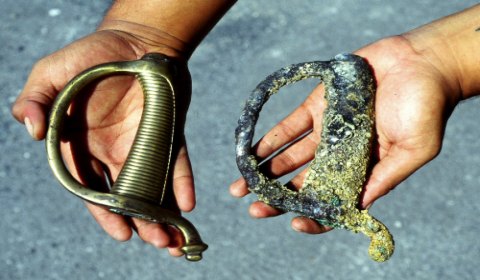
Sabre hilts,
Seine collection
Metals are corroded by salt water, and become coated by a gangue of sediments, corrosion materials and organic matter. Often, the original metal core has completely dissolved.
After a long stay underwater glass becomes opaque; ceramics are contaminated by salts. Wood, when saturated, may split when brought out of the water. Leather and textiles, after a long immersion, may soften, darken or blacken.
Conservation techniques

Swivel-Gun treatment

Rudder angle indicator treatment

Pieces of a plate reassembled

Electolysis of a cannon

Reconstitution of a teapot

Packing items for storage

Rinsing items

Fire-fighting pump on treatment before an electolysis

Classification in the Museum collections storage after treatment
The staff of the laboratory is trained in the conservation treatment of such materials, both in the laboratory and at the site of the wrecks. Techniques vary according to the nature of the of the object.
Metal objects, for instance, need first to be freed of the coral and shell concretions then dechlorated by mechanical, chemical or electro-chemical methods; glass and ceramics need a long immersion in fresh water to remove salts; leather and textiles may need to be entirely desiccated before preservation treatment. Once treated, the objects undergo a final cleaning, either by fine sandblasting or using appropriate chemicals. Broken objects are reassembled and glued, with missing pieces reconstituted.
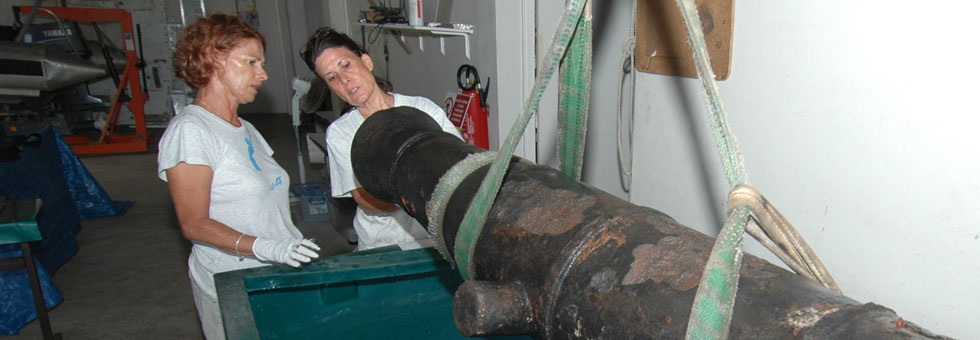
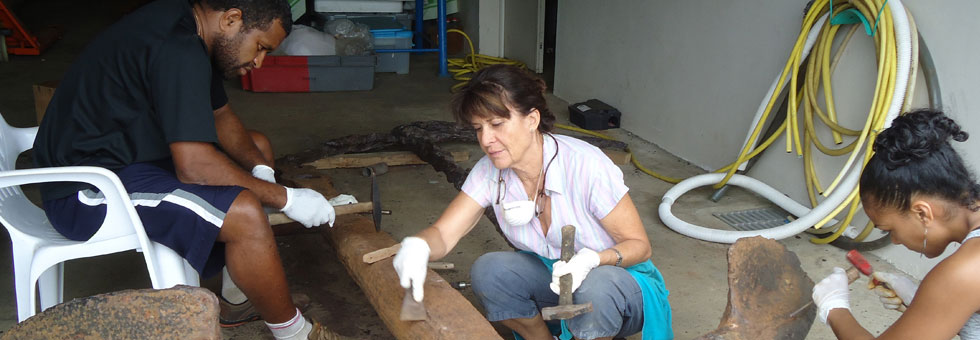
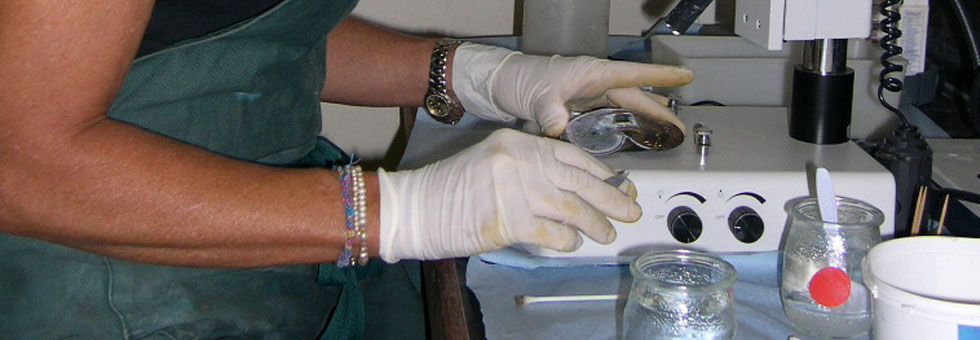
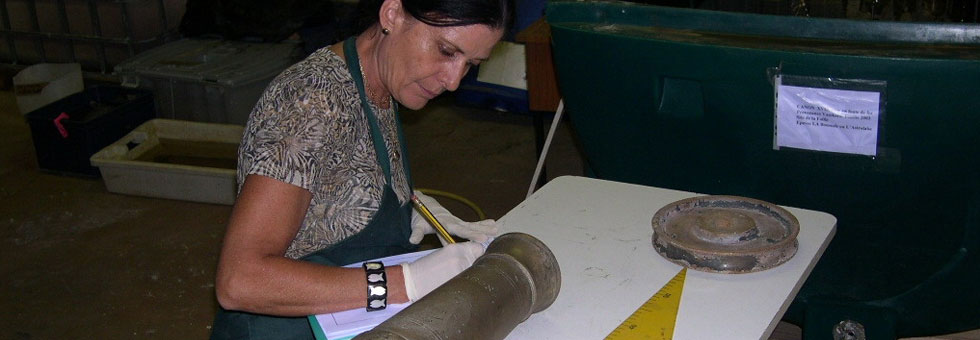






 Feet of the ship’s wheel before and after treatment, Seine Collection
Feet of the ship’s wheel before and after treatment, Seine Collection Graphometer before treatment, La Pérouse Collection
Graphometer before treatment, La Pérouse Collection Graphometer after treatment, La Pérouse Collection
Graphometer after treatment, La Pérouse Collection Chandelier before treatment, Ville de St Nazaire collection
Chandelier before treatment, Ville de St Nazaire collection Chandelier after treatment, Ville de St Nazaire collection
Chandelier after treatment, Ville de St Nazaire collection Coins before treatment, La Pérouse Collection
Coins before treatment, La Pérouse Collection Coins after treatment, La Pérouse Collection
Coins after treatment, La Pérouse Collection Teapot before treatment, Ville de St Nazaire collection
Teapot before treatment, Ville de St Nazaire collection Teapot after treatment, Ville de St Nazaire collection
Teapot after treatment, Ville de St Nazaire collection Rudder angle indicator before treatment, Seine collection
Rudder angle indicator before treatment, Seine collection Rudder angle indicator after treatment, Seine Collection
Rudder angle indicator after treatment, Seine Collection Pipes coated by a gangue of sediments, Ambroua collection
Pipes coated by a gangue of sediments, Ambroua collection Sabre hilts, Seine collection
Sabre hilts, Seine collection Swivel-Gun treatment
Swivel-Gun treatment Rudder angle indicator treatment
Rudder angle indicator treatment Pieces of a plate reassembled
Pieces of a plate reassembled Electolysis of a cannon
Electolysis of a cannon Reconstitution of a teapot
Reconstitution of a teapot Packing items for storage
Packing items for storage Rinsing items
Rinsing items Fire-fighting pump on treatment before an electolysis
Fire-fighting pump on treatment before an electolysis Classification in the Museum collections storage after treatment
Classification in the Museum collections storage after treatment